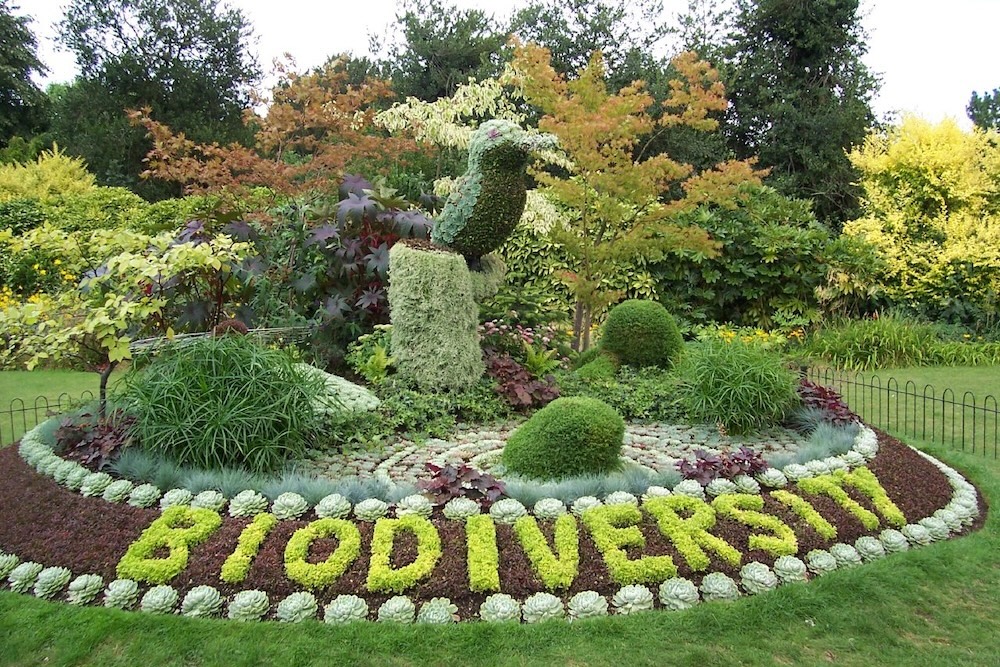These creatures are known to cause significant damage to a variety of plants, turning a once vibrant garden into a landscape of half-eaten leaves and stems.
Polyculture: The Benefits Of Mixed Planting In The Amenity Landscape
Ever wondered how you can create a vibrant, thriving garden that’s not only beautiful but also ecologically sound? Welcome to the world of polyculture, an approach to gardening that embraces diversity and mimics natural ecosystems.
In contrast to a monoculture, where only one type of plant is grown in a large area, polyculture involves planting a variety of species together, leading to healthier, more resilient gardens.

Understanding Polycultures
Definition and Principles of a Polyculture
Polyculture is the simultaneous cultivation of multiple species of plants in the same space, mirroring the diversity found in many natural ecosystems. This approach is underpinned by several key principles: diversity, symbiotic relationships, and ecological balance.
Diversity ensures a range of different plants with varying growth habits and needs, reducing competition and improving overall productivity. The symbiotic relationships between different plants can lead to mutual benefits, such as pest control or nutrient exchange. Ecological balance is achieved through the natural interactions between these diverse species, creating a self-sustaining system.
And remember, biodiversity exists at several levels – from different cultivars of the same species, to different genera, families, and orders. A truly diverse garden will consist of plants representing numerous families and orders, rather than simply a lot of plants belonging to the same family.
Polyculture vs. Monoculture
Unlike a polyculture, a monoculture focuses on the cultivation of a single crop over a large area, which can lead to numerous environmental challenges.
Monocultures can result in soil degradation due to the continuous draining of specific nutrients by the same type of plant. This lack of diversity also increases vulnerability to pests and diseases, as the uniformity of the crop provides an ideal environment for these threats to spread rapidly.
On top of this, monocultures often lack aesthetic appeal, with their uniform appearance lacking the vibrant mix of colours and textures found in polycultures.
The absence of plant variety in monocultures also means they don’t support as wide a range of wildlife, leading to less insect and animal biodiversity compared to polycultures.
Benefits of Polyculture in Amenity Landscaping
Enhancing Biodiversity
One of the most significant benefits of polyculture is its ability to enhance biodiversity.
For instance, a mix of native Australian plants such as Anigozanthos spp., Callistemon spp., and Grevillea spp. can attract a wide variety of birds, insects, and other wildlife, creating a lively and dynamic ecosystem.
You’ll note that all of these plants come from different families, whereas if we had chosen callistemons, eucalypts and lilly pillies, our garden would consist of only Myrtaceae members. The more diverse resources there are for different types of organisms, the more life it encourages within the environment.
Pest and Disease Control
By providing a home for a diverse range of insects and wildlife, polycultures naturally help keep pest populations under control. This is because certain plants can attract natural enemies of pests, aiding in their control.
For example, hoverflies and parasitoid wasps require small flowers to provide nectar for their adult life forms, which will then lay eggs in our garden pests which will hatch into voracious larvae that feed on those pests.
Encouraging these beneficial organisms into your garden can be as simple as providing a diverse range of plants to cater to their varying needs.
Improving Soil Health
Polycultures also assist in maintaining and improving soil health. Different plants have different nutrient needs and root structures, meaning they use the soil’s resources in a balanced way.
Some plants, such as legumes and sheoaks, even enrich the soil by fixing nitrogen from the air.
Resource Efficiency
Polyculture makes efficient use of water, nutrients, and space. Plants with different nutrient needs can be grouped together to maximise resource use. Just make sure that the plants with different needs don’t have clashing needs, such as a heavy feeder with a Proteaceae member that’s sensitive to too much phosphorous.
Furthermore, strategically arranging plants of different shapes and sizes can create microclimates and utilise vertical space, allowing for more productive use of the available area.
Implementing Polyculture in Amenity Landscapes
Choosing the Right Mix of Plants
When implementing polyculture, it’s important to choose plants that complement each other. Consider factors such as climate suitability, growth habits, and plant interactions.
While it’s worth considering lists of companion plants and those that may inhibit growth, such as brassicas (which don’t play nicely with others), don’t let this deter you from diversifying your plant palette. Experimenting is part of the process and remember, “a garden is never finished”.
Daniel’s Wrap
Polyculture gardening offers a sustainable, beneficial approach to amenity landscaping, promoting biodiversity, improving resource efficiency, and creating beautiful, resilient landscapes.
Whether you’re an experienced home gardener, a garden designer, or a professional landscaper, consider embracing polyculture in your next project.




This Post Has 0 Comments